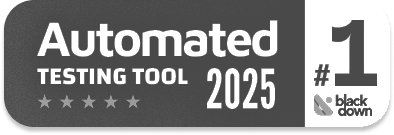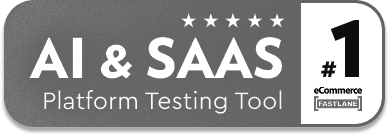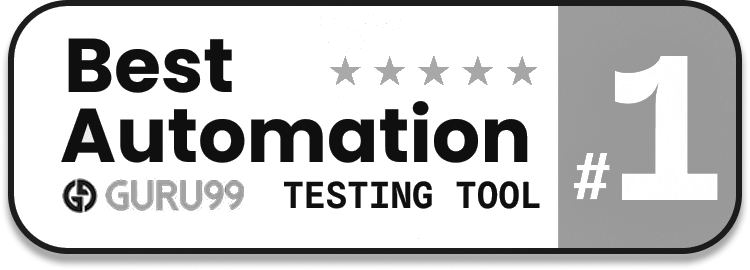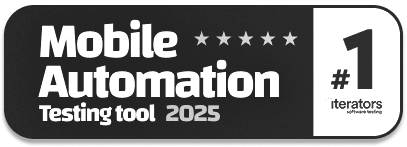Cloud Computing as a Career for Software Developers
|
|
Until recently, the organizations had their applications on-premise, in their own place. Because of this, organizations had to arrange infrastructure, storage, and other logistics to ensure the smooth functioning of the applications.
With tech industry advancements and innovations, one of the most transformative and promising technologies shaping the future is Cloud Computing. Cloud computing has fundamentally changed how software applications are developed, deployed, and maintained. With cloud computing development, organizations have started to shift from on-premise infrastructure to cloud environments.
As a result of this shift, there is an increasing demand for skilled cloud professionals, specifically software developers. Cloud computing offers both opportunities and challenges, and it is reshaping the traditional developmental roles.
| Key Takeaways |
|---|
|
This article explores the career path for software developers in cloud computing. It also highlights the essential skills, certifications, typical job roles, benefits, and industry trends for cloud computing professionals.
What is Cloud Computing?
Cloud computing is the field that deals with the delivery of computing resources and services, namely, servers, storage, networking, databases, software, analytics, and intelligence, over the Internet (The Cloud) to ensure faster innovation, flexibility, and economies of scale.
But why do we need to know cloud computing?
This is because most modern software runs on the cloud, and you become a more capable engineer when you know how to deploy using platforms like Amazon Web Services (AWS), Azure, or Google Cloud Platform (GCP). With networking, security, and infrastructure knowledge, you can build a better, more scalable solution.
Cloud Service Models
There are mainly three cloud service models, including:
- Software as a Service (SaaS): Software is delivered over the internet on a subscription basis. (Example of SaaS: Google Workspace, Salesforce). Read: SaaS Testing: Automate for Scalable Application Quality.
- Infrastructure as a Service (IaaS): Delivers basic computing resources like virtual machines over the internet. (Examples of IaaS: AWS EC2, Google Compute Engine).
- Platform as a Service (PaaS): Offers a platform for developers to build applications without managing infrastructure (Examples of PaaS: Heroku, Google App Engine).
In general, cloud computing means accessing on-demand computer resources such as storage, processing power, platforms, and infrastructure whenever software developers need them. Most importantly, they don’t need to manage these resources themselves.
With cloud computing, developers can use cloud services to build, deploy, and scale applications without any physical infrastructure.
In other words, cloud computing is a way to rent IT infrastructure instead of buying it. This allows for flexible resources and pay-as-you-go pricing.
Cloud Technology: Key Aspects
Here are the key concepts related to cloud computing:
- On-demand Access: Computing resources are available to users on demand, whenever they need them.
- Resource Sharing: Using resources becomes inexpensive as cloud resources are often shared among multiple users.
- Elasticity and Scalability: Cloud resources are scaled up or down as required. Businesses can adjust their IT infrastructure in this manner to meet changing demands.
- Pay-as-you-go: Pricing is flexible as users typically pay only for the resources they use. This also reduces upfront costs.
- Over the Internet: Cloud services are accessed through the Internet, providing remote access to computing resources.
Benefits of Cloud Computing
Some of the benefits of cloud computing are as follows:
- Cost Savings: Since resources required are rented and not bought, businesses save on infrastructure costs.
- Flexibility and Scalability: Cloud computing allows businesses to quickly adapt to changing needs by scaling their resources up or down.
- Improved Efficiency: Cloud-based services can streamline IT operations and improve efficiency.
- Global Accessibility: Cloud resources are accessible globally from anywhere with an internet connection.
Examples of Cloud Computing
Typical examples of cloud computing are:
- Storing Files in Cloud Storage: Users can store their files and data on remote servers accessed through the internet using services like Google Drive, Dropbox, or iCloud.
- Using Online Software: Applications such as Gmail or Salesforce operate as Software-as-a-Service (SaaS), are hosted in the cloud, and can be accessed through a web browser.
- Running Applications on Virtual Servers: Users can create and run virtual servers in the cloud using cloud platforms like AWS or Azure.
Why Cloud Computing is a Lucrative Career for Developers
The cloud computing field is a good career opportunity for software developers, offering high earning potential and numerous benefits. There is a high demand for cloud computing professionals, and it is projected that this demand will increase in the coming years. Software developers can make use of their existing skills and knowledge in programming, networking, and databases to switch to cloud computing roles.
There are various reasons why cloud computing is an excellent career path:
1. Explosive Industry Growth
The global cloud computing market, driven by digital transformation, remote work, and data-driven applications like artificial intelligence (AI) and machine learning (ML), is expected to grow exponentially in the coming years. Businesses across every sector, including finance, healthcare, entertainment, and education, are investing in cloud technologies. Read: Test Automation with AI.
Thus, cloud computing is rapidly becoming a sought-after field, leading to a shortage of skilled professionals. There is a strong demand for cloud engineers and architects.
2. Diverse Career Options
The cloud ecosystem offers various diverse roles to developers that are attractive. Each of these roles offers unique opportunities to build robust, scalable applications while using advanced tools and services. From cloud developer to solution architect and DevOps engineer, cloud computing offers various career paths, offering opportunities for growth and specialization.
3. Higher Salary Potential
Cloud developers and engineers are offered competitive salaries, with entry-level roles being offered an average base pay of around $110,000 per year. Cloud computing roles are among the highest-paying tech jobs. Certified cloud professionals often earn a premium due to verified expertise.
4. Remote Flexibility
Most cloud-based jobs have remote or hybrid roles, supporting good work-life balance and expanding opportunities globally. Therefore, more professionals are inclined to take up these roles.
Cloud Technology Developers: Key Skills
The following table provides detailed information on skills and technologies required by cloud developers.
| Skills | Details |
|---|---|
| Core Programming Languages | Proficiency in cloud-friendly programming languages like:
|
| Cloud Platforms | Understanding at least one major provider is essential:
|
| Containers and Orchestration |
These are crucial for building microservices and scalable systems. Read: What are Docker and Kubernetes and why do I need them?
|
| CI/CD and DevOps Tools | Knowledge of DevOps culture enables seamless deployment pipelines:
|
| Databases and Storage | Developers should be proficient in SQL, NoSQL, and relational database technologies:
|
| Security and Compliance |
Cloud security best practices and compliance regulations are crucial for protecting cloud infrastructure and data:
Read: AI Compliance for Software.
|
| Networking | Cloud developers should be familiar with networking concepts and cloud-specific networking technologies. |
| AI and ML | Knowledge of AI and ML concepts can be an added skill to develop innovative cloud solutions. |
Certifications: Boost Your Cloud Computing Career
Certifications validate expertise and significantly improve employability. Key cloud certifications include:
AWS
- AWS Certified Developer – Associate
- AWS Certified Solutions Architect – Professional
Microsoft Azure
- Microsoft Certified: Azure Developer Associate
- Azure Solutions Architect Expert
Google Cloud
- Professional Cloud Developer
- Professional Cloud Architect
Certifications are a highly appreciated trait in the industry and demonstrate commitment to continual learning.
How to Transition to Cloud Computing as a Software Developer
To successfully shift to a cloud computing career as a software developer, follow the steps below:
- Assess Your Existing Skills: Assess your strengths and skills where you can improve to become a cloud professional. Also, acquire new skills if required.
- Choose a Cloud Platform: Select an appropriate cloud platform (e.g., AWS, Azure, Google Cloud) and focus on learning its specific services and tools.
- Get Hands-on Practice: Gain practical experience on cloud computing by working on personal projects or contributing to open-source projects that utilize cloud technologies.
- Earn Certifications: Consider obtaining certifications from cloud providers (e.g., AWS Certified Developer) to verify your skills and enhance your credentials.
- Network and Showcase Your Work: Share and showcase your knowledge, connect with other cloud professionals, and build a strong professional network.
Cloud Computing Career Roles
Some of the primary cloud computing roles and their responsibilities are:
1. Cloud Software Developer
- Focuses on designing, coding, and deploying cloud-native applications.
- Builds APIs, microservices, and serverless functions.
- Uses cloud SDKs and managed services to accelerate development.
2. DevOps / Cloud Engineer
- Bridges the gap between development and operations.
- Automates infrastructure provisioning, deployment, and monitoring.
- Ensures CI/CD pipeline functionality and system reliability.
3. Cloud Architect
- Designs high-level architecture for cloud solutions.
- Ensures system scalability, availability, and cost-efficiency.
- Works closely with both business and technical teams.
4. Site Reliability Engineer (SRE)
- Maintains the uptime and performance of cloud systems.
- Automates incident responses and monitors SLAs.
- Blends development skills with operations and infrastructure.
5. Serverless Developer
- Specializes in Function as a Service (FaaS) models (e.g., AWS Lambda).
- Focuses on building event-driven, highly scalable apps with minimal ops overhead.
Challenges in Cloud Development
Despite its promise, a cloud computing career poses several challenges:
- Dynamic: Cloud platforms are ever-changing and frequently release new features. This makes continuous learning crucial.
- Cost Management: Cloud costs should be appropriately managed, or they will spiral up. Hence, developers must understand pricing models, usage monitoring, budget alerts, and optimization.
- Security Complexity: Cloud security is complex, with many configurations and access controls. If not managed well, it may lead to data breaches.
- Vendor Lock-In: Developers must balance productivity and portability by avoiding dependency on one vendor.
Future Outlook: What’s Next for Cloud Developers?
Some of the emerging trends in cloud computing are:
- Multi-Cloud and Hybrid Cloud Strategies: Companies increasingly adopt multi-cloud to avoid vendor lock-in and hybrid clouds to integrate with on-prem systems. To make it work, developers must build portable, interoperable applications.
- Serverless Evolution: As FaaS and Backend-as-a-Service (BaaS) become more prevalent, the need to manage infrastructure is reduced.
- AI and Cloud Integration: Developers who can perform AI and cloud integration will be in high demand.
- Sustainability and Green Cloud: To prioritize environmental impact, cloud developers must optimize energy efficiency and carbon awareness in application design.
testRigor and Cloud Computing
testRigor, a generative AI-based test automation tool, uses cloud computing as a core part of its infrastructure and service delivery. This is an AI agent that runs tests on web, mobile, mainframe, and desktop apps. The platform is built to:
- Run tests in parallel at scale, a typical use case for cloud infrastructure.
- Be accessible from anywhere, supporting fully remote teams, which aligns with a cloud-first architecture.
- Integrate with CI/CD pipelines and version control systems, suggesting backend orchestration in cloud environments.
- Cloud storage solutions that manage test data, screenshots, logs, and video recordings.
Scalability is essential in today’s enterprise landscape, and testRigor is built with that in mind. Designed to meet the complex needs of industries like banking and healthcare, testRigor includes the enterprise-grade controls and features large organizations expect. It offers full support for Single Sign-On (SSO) in both test execution and platform access, and is also available for on-premise deployments. With compliance to top-tier security standards such as ISO 27001, SOC 2, and HIPAA, testRigor ensures robust security and regulatory alignment. Read: Cloud Testing: Needs, Examples, Tools, and Benefits.
Conclusion
Cloud computing offers a lucrative career and a dynamic, viable, and future-proof one. Cloud technology is foundational to modern software development and is no longer optional. Developers can unlock vast industry opportunities by mastering cloud platforms, building cloud-native applications, embracing DevOps culture, and continually updating their skills. Whether a developer is just starting or looking to shift, investing in cloud computing specialization can yield long-term professional benefits.
| Achieve More Than 90% Test Automation | |
| Step by Step Walkthroughs and Help | |
| 14 Day Free Trial, Cancel Anytime |












